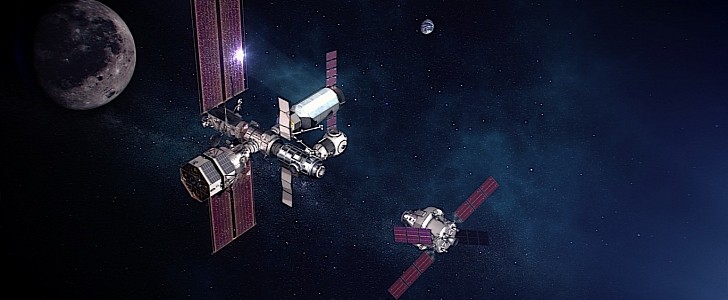If all goes according to plan, by the end of the decade humanity will have settled it’s first celestial body away from planet Earth. The Artemis program targets both lunar landings and an outpost on the satellite, but also our first orbital station around the Moon.
This space station now being planned is called Gateway, and when fully operational will act as a stepping stone for the exploration not only of the Moon, but also the next target for human landings, Mars.
The project is one of gargantuan proportions, and NASA is not alone in this. A host of contractors have been brought on board to work on the project, and now similar entities from other countries are brought in.
Last week, NASA announced a partnership with its Canadian counterpart (CSA) that will see the neighbors from the North being in charge with the development of something called Canadarm3. The hardware is a robotic arm to be deployed on the exterior of the Gateway, and it should be capable of reaching many parts of the stations exterior to “plug into specially designed interfaces.”
The new station will be about one-sixth the size of the International Space Station and will comprise power and propulsion elements, as well as habitation (handled by the European Space Agency), logistics and airlock capabilities. CSA has been tasked with providing the robotic interfaces for Gateway modules that would enable payload installation in the initial stages of the station’s assembly above the Moon.
“Canada was the first international partner to commit to advancing the Gateway in early 2019, they signed the Artemis Accords in October, and now we’re excited to formalize this partnership for lunar exploration,” said in a statement NASA Administrator Jim Bridenstine.
“This agreement represents an evolution of our cooperation with CSA providing the next generation of robotics that have supported decades of missions in space on the space shuttle and International Space Station, and now, for Artemis.”
The first Canadian-made hardware will launch to the Moon in 2026 on a NASA logistics flight. In exchange for their participation, the Canadians got two astronauts seats, one on the Artemis II mission, and the second on the Gateway itself.
The project is one of gargantuan proportions, and NASA is not alone in this. A host of contractors have been brought on board to work on the project, and now similar entities from other countries are brought in.
Last week, NASA announced a partnership with its Canadian counterpart (CSA) that will see the neighbors from the North being in charge with the development of something called Canadarm3. The hardware is a robotic arm to be deployed on the exterior of the Gateway, and it should be capable of reaching many parts of the stations exterior to “plug into specially designed interfaces.”
The new station will be about one-sixth the size of the International Space Station and will comprise power and propulsion elements, as well as habitation (handled by the European Space Agency), logistics and airlock capabilities. CSA has been tasked with providing the robotic interfaces for Gateway modules that would enable payload installation in the initial stages of the station’s assembly above the Moon.
“Canada was the first international partner to commit to advancing the Gateway in early 2019, they signed the Artemis Accords in October, and now we’re excited to formalize this partnership for lunar exploration,” said in a statement NASA Administrator Jim Bridenstine.
“This agreement represents an evolution of our cooperation with CSA providing the next generation of robotics that have supported decades of missions in space on the space shuttle and International Space Station, and now, for Artemis.”
The first Canadian-made hardware will launch to the Moon in 2026 on a NASA logistics flight. In exchange for their participation, the Canadians got two astronauts seats, one on the Artemis II mission, and the second on the Gateway itself.

